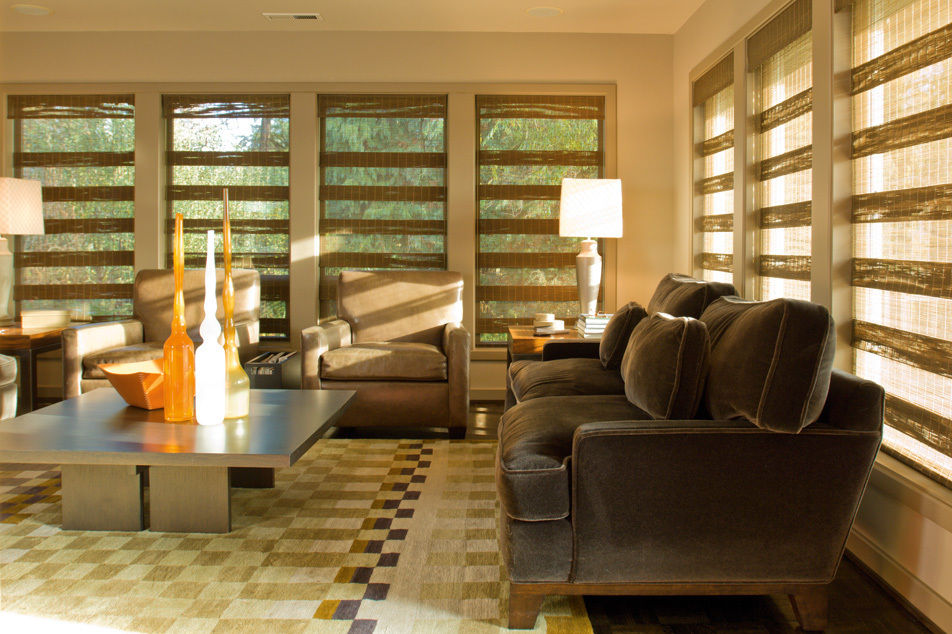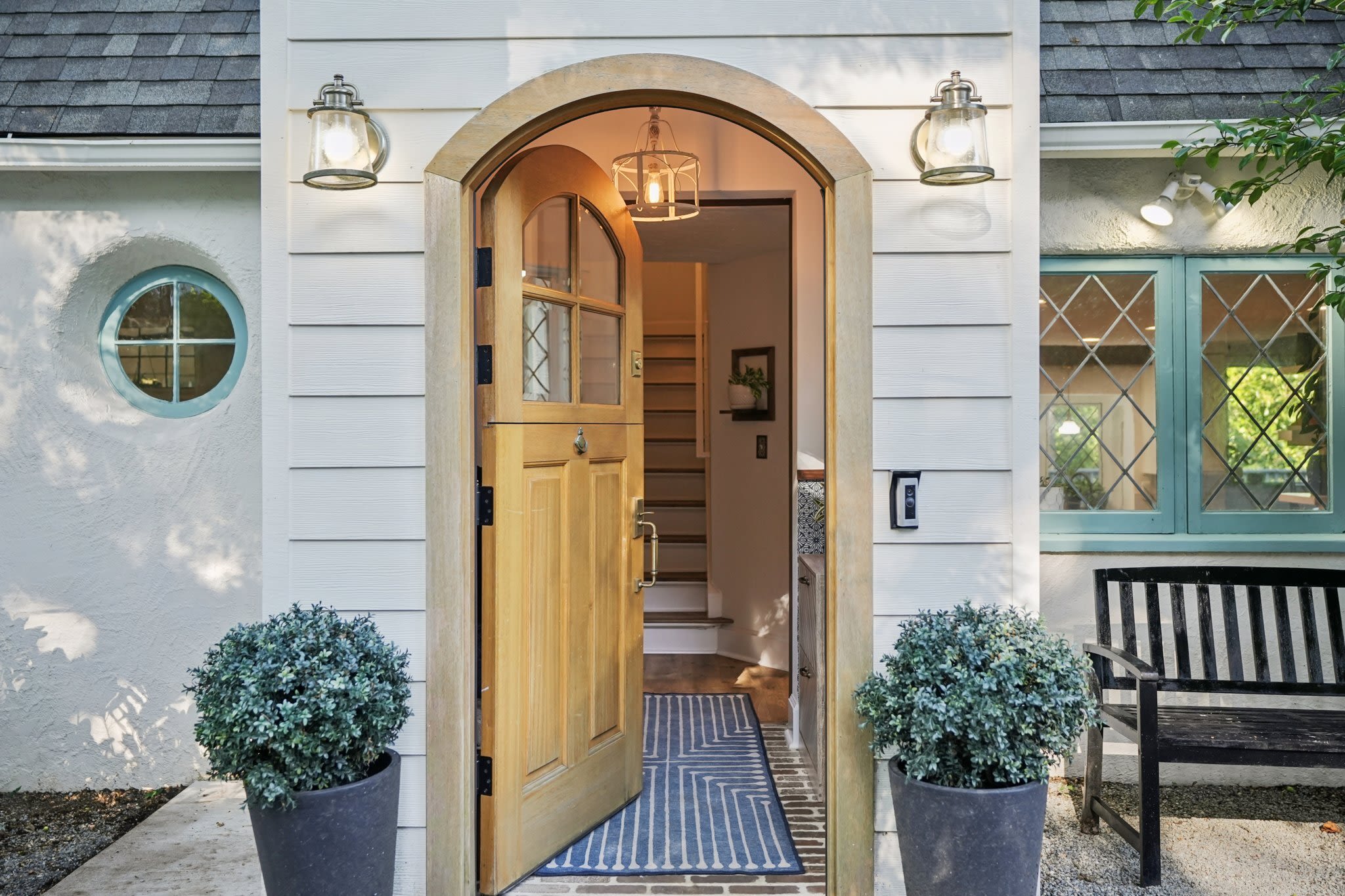Daylight Dapper
TODD DEWEY JANTZ and Curt Jantz were at a furniture exposition in London in 1999 when they got a call from their real estate agent back home in Portland. Their contemporary house in Portland Heights, which had spent less than a week on the market, already had a serious offer on the table. News of a home sale is always a cause to celebrate, except for the fact that the then-thirtysomething couple had exactly 12 weeks to clear out—while preparing to welcome Landon, their soon-to-be-adopted infant son, into their home. Suddenly the pressure was on to consummate the most important house hunt of their lives.
The expectant dads, who co-own J.D. Madison Home Furnishings, a popular Pearl District boutique, combed most of the West Hills for a Tudor or Mediterranean-style house. But they found the answer to their desires in a somewhat unlikely Cedar Hills property—a 1960s-era “daylight” ranch with a blaring, lime green paint job—that was about to be repossessed by the bank.
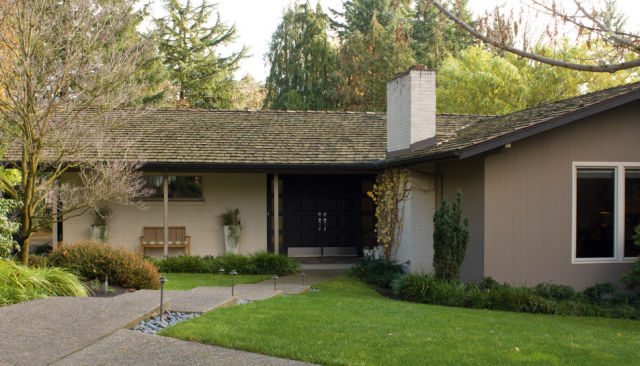
Image: Jon Jensen
The four-bedroom, two-level home needed a serious style update, but Todd and Curt were attracted to the spatially dynamic layout, featuring a U-shaped living space that wrapped around an interior courtyard. The site itself, nearly an acre of land with rolling perennial beds and an old orchard, clinched the deal. Todd recalls, “We were going to have a child, and having fruit trees and berry bushes—that really spoke to me.”
Still, the pair of avid decorators couldn’t wait to get rid of the “’60s fright” look in favor of “a very calm, more monochromatic space,” says Curt. They started by hiring Jody Becker of Interior Revisions Custom Remodeling to take most of the house down to the studs.
“The kitchen got gutted. It sounds like a crime, but it wasn’t,” Curt quips. The new residents ditched ancient harvest-gold appliances and maple plywood cabinetry in favor of a Viking range, sleek cherry cabinetry, limestone countertops and an undermounted stainless-steel sink. Their remodeling crew updated the home’s three-and-a-half baths, laid down new flooring, installed lighting and opened up sight lines in the main living space by removing and resituating walls. They also widened doorways leading from the main hallway into the kitchen and dining room. New pocket doors inset with translucent panes of beveled glass transmit both light and a sense of spatial flow, even when shut for privacy.
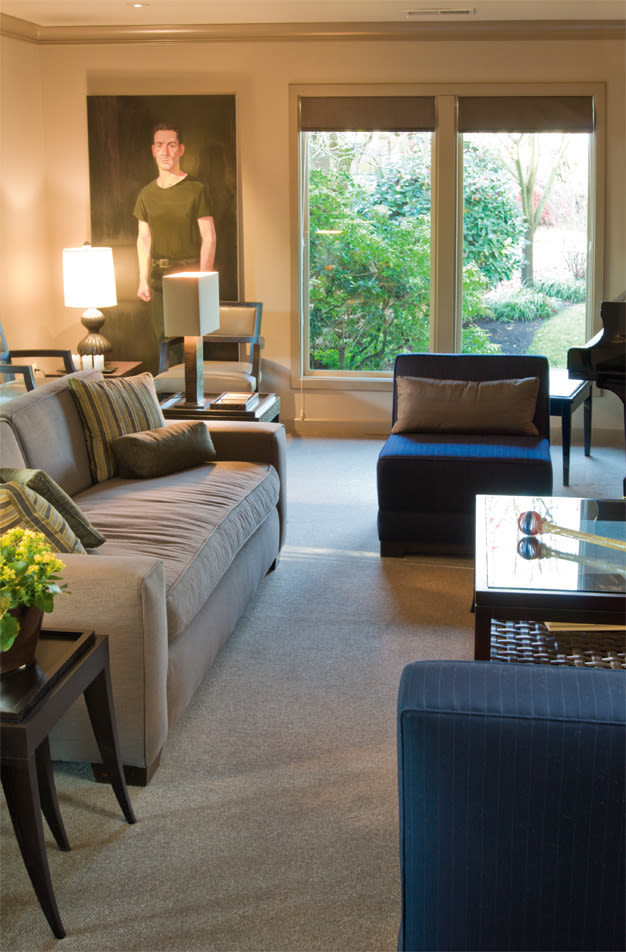
Original artwork and garden views pop against the living room’s rectilinear, monochromatic finishings.
Image: Jon Jensen
Given that the outdoor space is one of the property’s main assets, the new owners wanted to enhance the sense of connection between indoor and outdoor settings. Whereas before, just a few small windows provided glimpses of the gracious maples and the corkscrew willow in the backyard, now French doors lead from most of the bedrooms and living spaces onto terraces ideal for lounging. “We replaced every single window in the house,” says Curt. New picture windows on the main level frame a vista of an orchard that cascades down a nearby hill, while interior windows peek onto the courtyard, which has been landscaped with beds of rock and a stone fountain.
Of course, considering that they run one of Portland’s more popular home décor boutiques, the pair devoted significant attention to interior finishes and furnishings. J.D. Madison specializes in clean-lined contemporary pieces—think sculpted wood side-tables by Brent Comber and sensuous ceramics by Jonathan Adler. “I’m a little bit of a traditionalist,” says Todd. “The artwork and furnishings we had were well suited for a house of this vintage.”
Chocolate parquet flooring adds a touch of elegance to the home’s main level, as does wide crown molding. The new owners reinforced the feeling of formality by repeating shapes, colors and textures throughout. For instance, a pattern on the latticed-wood doors of a set of large French “bibliothèque” cabinets in the formal living room inspired the diamond forms on the custom-welded iron railing that connects the main and lower floors. A collection of ceramics sporting olive and tobacco-brown glazes grace various bookshelves, and bright glasswork punches up side tables formed from loose-grained woods such as wengé and zebrage.
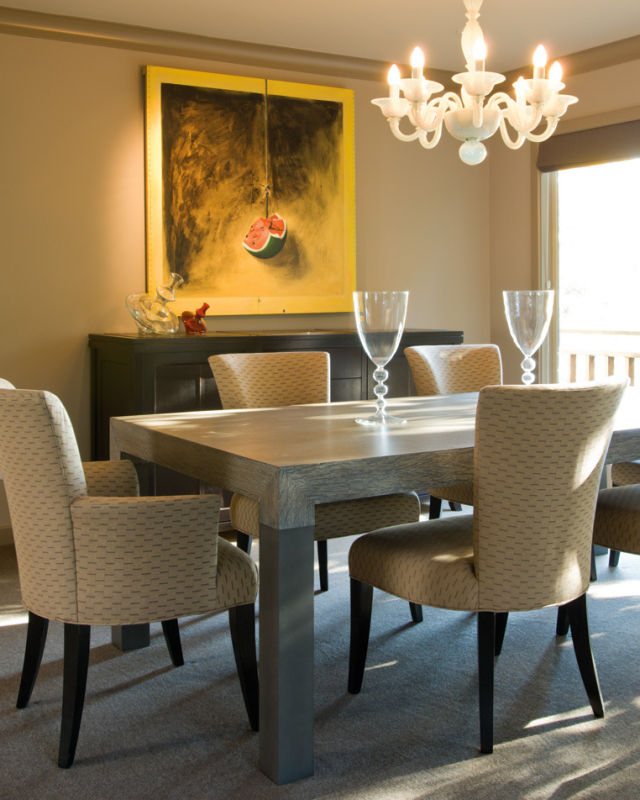
A fussy old glass chandelier looks beautiful and very, very festive in a contemporary room, says homeowner Curt Jantz. This one came from a Paris flea market. The Parsons table features sturdy zinc legs and a surface of cerused, quartersawn oak.
Image: Jon Jensen
Still, a plenitude of odd thrifted pieces and original works of art ensure the home doesn’t look like a pristine showroom. “Adding something old or found adds an instant authenticity,” says Todd. An aquamarine-tinted “vaseline” glass chandelier, which the couple brought back in pieces from a Paris flea market, hangs over the table in the formal dining room, lending a romantic sparkle. In the family room—a later addition, built by Krahn Construction—two slabs of blowtorched wood, picked up at a local art sale, lean casually against a wall. They’re a rustic foil to refined contemporary artworks such as a triptych of abstract collages by Portland artist Kelly Kievit that feature cotton paper and marble dust glazed in oil pigment. And then there are colorful ceramics projects made by Landon, now 8, arranged on a table.
Raising a child around fine furniture and unguarded glassware hasn’t caused the problems one might expect. “I think you can do a really nice job of having your grown-up house and raising children,” Todd remarks. “You say, ‘This is glass art, and you need to be extra careful around it.’” At age 3, Landon made a roomful of adults crack up by placing his sippy-cup of juice on a cocktail table and exclaiming that he needed a coaster.
“Nothing’s so precious that it can’t be used,” Todd says.
